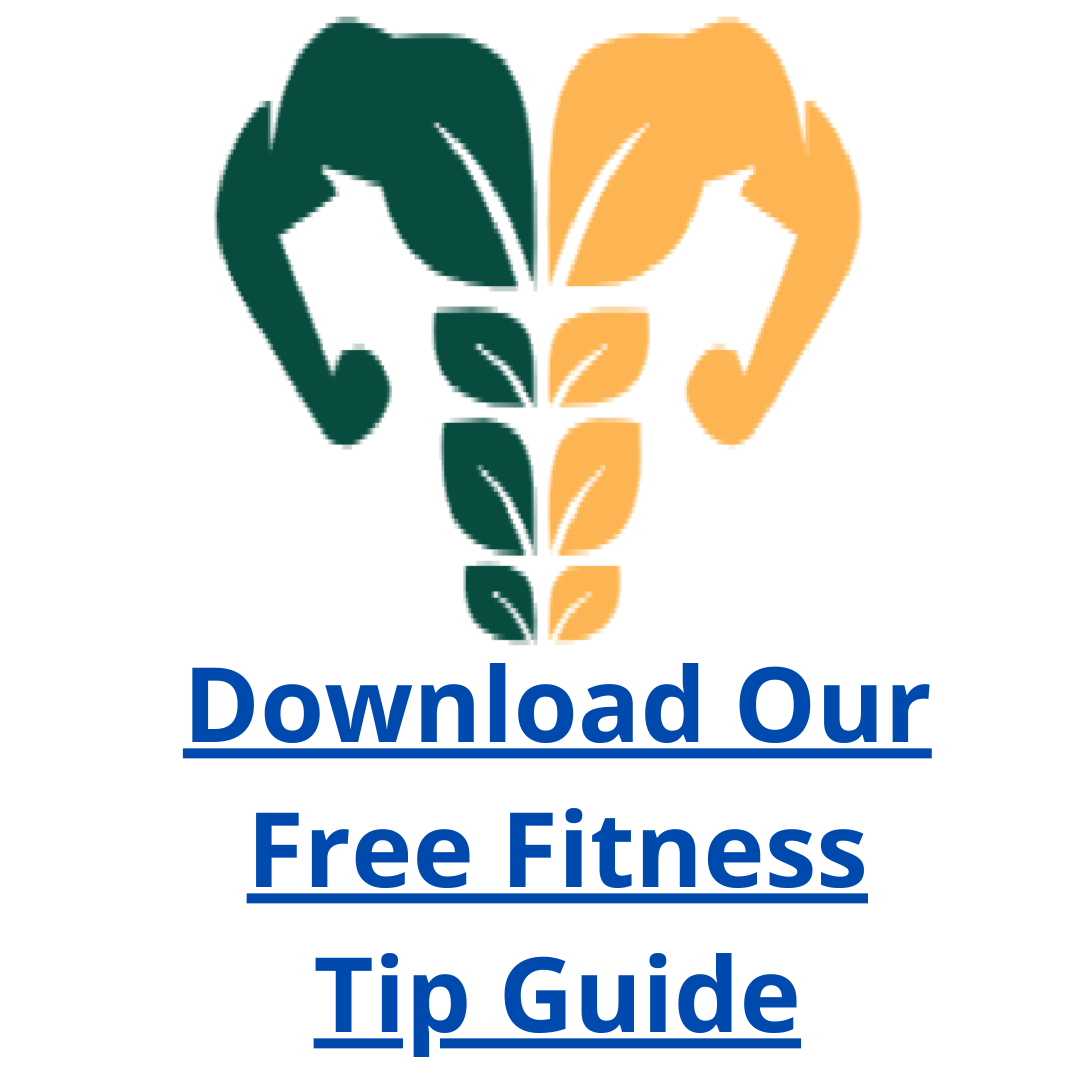Beginner Leg Workouts At Home
Home Leg Workouts: Sculpt, Strengthen, and Empower Your Lower Body
Introduction:
Living in a paced world where time’s precious the idea of transforming your home into a personal fitness sanctuary has become increasingly appealing. Home workouts offer convenience. Have an impact, on overall well-being. As we explore the realm of home fitness our attention naturally turns to an area that plays a role in achieving a strong and sculpted physique – our legs.
Recognizing the Importance of Home Workouts
In times there has been a shift towards home-based fitness routines. Understanding the importance of home workouts goes beyond having proximity and convenience; it’s about taking control of your health and fitness journey. Home workouts remove the constraints of time and commuting offering an effortless solution for integrating exercise into your daily routine.
Additionally working out at home provides an environment that allows individuals to exercise at their pace without any anxieties that may arise in public gyms. It’s an approach that caters, to each individual’s needs and preferences making the fitness journey not only effective but also enjoyable.
Achieving sculpted legs is a goal, within your home fitness journey. It goes beyond aesthetics; it’s about unleashing the potential of your body. Strong legs form the foundation for an agile physique contributing to strength, balance, and mobility.
This comprehensive guide will be your companion on this journey. Whether you’re a fitness enthusiast or just starting with home workouts the exercises described here are designed to be accessible, effective, and adaptable for fitness levels. As we explore ten leg exercises together visualize not only the physical transformation but also the empowerment that comes from taking control of your fitness fate.
Now let’s dive into each exercise uncovering form techniques and unlocking the potential of your home leg workout routine. Prepare yourself to sculpt, strengthen, and transform—your path, towards well-defined legs begins now.
Table of contest:
—————————————————————————————————————-
-
- The Foundation: Mastering the Classic Squat
- Step-by-Step Guide for Optimal Squat Technique
- Emphasizing Thighs and Glutes for Maximum Impact
- Unleashing Power: Lunges for Everyday Movement Transformation
- Elevate Your Calves: Single-Leg Calf Raises
- Leveling Up: Mastering Pistol Squats for Intensified Workouts
- Boosting Intensity: Explosive Squat Jumps for Cardiovascular Benefits
- High Knee Toe Taps
- Stamina and Strength Test: Wall Sits!
- Glute Kickbacks
—————————————————————————————————————————————————
1. The Foundation: Mastering the Classic Squat
At the heart of any effective leg workout routine lies the classic squat – a foundational, powerhouse exercise that has withstood the test of time. Often regarded as the king of lower body exercises, the classic squat engages multiple muscle groups simultaneously, making it a cornerstone for building strength and endurance.
Squats are more than just a means to sculpt your thighs and glutes; they are a compound movement that activates your core, lower back, and even your upper body to some extent. By incorporating squats into your home workout routine, you are laying the groundwork for a comprehensive, full-body transformation.
Step-by-Step Guide for Optimal Squat Technique
Mastering the art of the squat is not just about going up and down – it’s about perfecting your form to maximize its impact on specific muscle groups.
2.Here’s a step-by-step guide to help you achieve optimal squat technique:
1. Set Your Stance: Begin by standing with your feet shoulder-width apart. Ensure your toes are pointing slightly outward.
2. Engage Your Core: Before you descend into the squat, engage your core muscles. This not only provides stability but also protects your lower back.
3. Initiate the Descent: Start lowering your body by bending your knees and pushing your hips back. Imagine sitting back in an imaginary chair.
4. Maintain a Neutral Spine: Keep your back straight and chest up. Avoid rounding your back to prevent unnecessary strain.
5. Go As Low As Comfortable: Descend and continue the movement until your thighs are parallel to the ground or as low as feels comfortable. Ensure your knees are tracking over your toes.
6. Drive Through Your Heels: As you ascend, focus on driving through your heels. This engages your hamstrings and glutes effectively.
7. Complete the Movement: Stand tall at the top, fully extending your hips and knees. Repeat the movement for the desired number of reps.
3.Emphasizing Thighsand Glutes for Maximum Impact
As you integrate the classic squat into your home workout routine, remember that consistency is key. Gradually increase the number of repetitions and challenge yourself with variations as your strength improves. The classic squat isn’t just an exercise; it’s a gateway to unlocking the strength and resilience of your lower body. So, step into the world of squats, perfect your form, and lay a robust foundation for your home leg workout journey.
4. Unleashing Power: Lunges for Everyday Movement Transformation
As we delve further into the realm of sculpting powerful legs at home, the spotlight now turns to lunges – a dynamic and versatile exercise that not only strengthens but transforms everyday movements into a targeted lower-body workout. Lunges are a fantastic addition to your home leg workout routine, providing a unique challenge that engages multiple muscle groups and enhances your overall mobility.
Turning Daily Movements into a Workout
One of the key advantages of incorporating lunges into your home workout routine is their ability to mirror and enhance natural, everyday movements. Whether it’s stepping forward to reach for an item or climbing stairs, lunges replicate these motions, making them functional exercises that translate directly into improved daily activities.
By consciously integrating lunges into your routine, you not only work towards sculpting your thighs and glutes but also refine your body’s ability to move with purpose and strength. It’s a transformative approach that extends beyond the realm of traditional workouts, seamlessly integrating fitness into your daily life.
Detailed Guide to Performing Lunges: Engaging Hips, Hamstrings, Quads, and Glutes
To unleash the full power of lunges, it’s essential to master the proper technique.
Here’s a detailed guide to performing lunges with precision, ensuring optimal engagement of the hips, hamstrings, quads, and glutes:
1. Starting Position: Stand with your feet together, maintaining an upright posture.
2. Step Forward: Take a controlled step forward with one foot, ensuring your stride is long enough to create a 90-degree angle with both knees when you lower your body.
3. Lower Your Body: Bend both knees, lowering your body toward the ground. Aim to bring your back knee close to or gently touch the floor.
4. Maintain Core Engagement: Keep your core engaged throughout the movement to stabilize your body and protect your lower back.
5. Push Back to Starting Position: Push off the front foot to return to the starting position, completing one lunge repetition.
6. Repeat on Alternate Leg: Switch legs and repeat the lunge movement, ensuring balance in engaging both sides of your lower body.
Benefits of Lunges: Targeted Muscle Engagement and Beyond
Lunges go beyond mere muscle sculpting; they offer a host of benefits, including Engaging Hips and Glutes: The forward step in lunges activates the muscles around your hips and glutes, contributing to a firmer and more lifted appearance.
Strengthening Hamstrings and Quads: The descent and ascent in lunges target the hamstrings and quads, fostering strength and definition in these muscle groups.
Improving Balance and Stability: Lunges enhance your balance and stability, crucial for preventing injuries and promoting overall functional fitness.
Incorporating lunges into your home leg workout routine not only adds variety but also introduces a transformative element to your fitness journey. As you master the art of lunges, you not only strengthen your lower body but also cultivate a foundation for improved movement, both in and out of the workout space. So, step forward into the world of lunges, and witness the power of turning daily movements into a purposeful, leg-transforming workout.
5. Elevate Your Calves: Single-Leg Calf Raises
As we continue our journey to sculpted legs at home, we turn our attention to a deceptively simple yet incredibly effective exercise – the single-leg calf raise. This exercise hones in on a specific area of your lower body, targeting the calves with precision. The beauty of single-leg calf raises lies in their simplicity, making them accessible to fitness enthusiasts of all levels while delivering powerful results.
Step-by-Step Instructions for Single-Leg Calf Raises: Challenging Calves and Improving Flexibility
Mastering single-leg calf raises involves more than just going up on your tiptoes; it’s about intentional movement and engaging your muscles for maximum impact.
Here’s a step-by-step guide to help you perform single-leg calf raises effectively:
1. Find Your Balance: Begin by standing tall with your feet hip-width apart, ensuring a stable base. Shift your weight onto one leg while slightly lifting the other foot off the ground.
2. Engage Your Core: Tighten your core muscles to maintain stability and proper posture throughout the exercise.
3. Rise Onto Your Tiptoes: Slowly rise onto the tiptoes of your standing leg, lifting your heel as high as possible. Focus on a controlled and deliberate movement, avoiding any sudden or jerky motions.
4. Hold at the Top: Once you’ve reached the highest point of the movement, hold the position for a brief moment to intensify the contraction in your calf muscles.
5. Lower with Control: Gradually lower your heel back to the starting position, resisting the urge to drop it quickly. Ensure a smooth and controlled descent to fully engage the calf muscles throughout the range of motion.
6. Repeat on the Other Leg: Shift your weight to the opposite leg and repeat the process, alternating between legs for the desired number of repetitions.
The Dual Benefits of Single-Leg Calf Raises
Single-leg calf raises specifically target the muscles in your calves – the gastrocnemius and soleus. By lifting your body weight onto one leg, you create a concentrated load on the calf muscles, promoting strength, endurance, and definition.
Improving Flexibility:
Beyond the strength-building aspect, single-leg calf raises contribute to improved flexibility in the ankle joint. The controlled rise onto the tiptoes stretches the calf muscles, enhancing overall joint mobility and reducing the risk of stiffness.
Incorporating single-leg calf raises into your home leg workout routine not only adds variety but also offers a focused approach to developing strong, well-defined calves. Consistency is key, so aim to include this exercise regularly and witness the transformation in both strength and flexibility. Stand tall, lift those heels, and elevate your calves to new heights on your journey to sculpted legs at home.
6. Leveling Up: Mastering Pistol Squats for Intensified Workouts
In the realm of home leg workouts, the journey to sculpted and powerful legs takes an exhilarating turn with the introduction of advanced pistol squats. Often considered the pinnacle of lower body exercises, pistol squats not only demand strength but also balance, flexibility, and precise control. As we embark on this journey, the challenge is not just physical; it’s a mental and transformative experience that pushes the boundaries of what your body can achieve.
Step-by-Step Guide to Mastering Pistol Squats: Intensifying Impact on Glutes
Mastering pistol squats is an accomplishment that requires patience, dedication, and a systematic approach. Here’s a step-by-step guide to help you navigate the intricacies of pistol squats and intensify the impact on your glutes:
1. Prepare Your Stance:
Begin by standing on a flat surface with your feet hip-width apart.
Shift your weight onto one leg while extending the other leg forward.
2. Balance and Alignment:
Engage your core to maintain balance and alignment throughout the movement.
Extend your arms forward for counterbalance.
3. Initiate the Descent: Slowly lower your body by bending the knee of the supporting leg. Simultaneously, extend the non-supporting leg straight forward, keeping it parallel to the ground.
4. Lower with Control: Aim to descend until your supporting thigh is parallel to the ground or as low as your flexibility allows. Keep your back straight and chest up throughout the movement.
5. Engage Your Glutes: As you ascend, focus on squeezing your glutes to powerfully drive through the supporting heel. Keep the non-supporting leg elevated throughout the ascent.
6. Repeat on the Other Leg: Shift your weight to the other leg and repeat the pistol squat, ensuring balance and control on both sides.
Intensifying Impact on Glutes: The Key to Pistol Squats
Pistol squats place a significant emphasis on glute activation, especially during the ascent phase. The controlled and powerful extension of the hip joint works to sculpt and strengthen the glute muscles, contributing to a lifted and toned appearance.
Enhancing Balance and Stability:
The single-leg nature of pistol squats not only intensifies glute engagement but also challenges your overall balance and stability. This holistic approach to lower body training goes beyond aesthetics, promoting functional strength and athleticism.
The Transformative Journey of Pistol Squats
Mastering pistol squats is a transformative journey that extends beyond physical benefits. It fosters mental resilience, body awareness, and a deep connection with your strength. While these squats may initially seem daunting, progress comes with consistent practice and a gradual increase in difficulty.
As you integrate pistol squats into your home leg workout routine, relish the challenge, embrace the learning curve, and witness the profound impact on your glutes and overall lower body strength. Level up your workout, elevate your fitness journey, and conquer the advanced realm of pistol squats for sculpted legs like never before.
7. Boosting Intensity: Explosive Squat Jumps for Cardiovascular Benefits
Progressing from Standard Squats to Explosive Squat Jumps
As we continue to elevate our home leg workout routine, the spotlight shifts to an invigorating exercise that not only intensifies the burn in your lower body but also adds a dynamic cardiovascular element – the explosive squat jump. This high-intensity variation takes the traditional squat to new heights incorporating a powerful jump into the movement. The result is not only sculpted legs but also a heart-pounding, calorie-burning workout that enhances both strength and cardiovascular fitness.
Incorporating Cardiovascular Benefits into the Home Workout Routine
The beauty of explosive squat jumps lies in their ability to seamlessly blend strength training with cardiovascular benefits. As you explosively push off the ground during the jump, your heart rate spikes, elevating the exercise into the realm of cardio. This dual-action approach makes explosive squat jumps a time-efficient and effective way to torch calories, improve endurance, and amplify the overall intensity of your home workout.
Safe and Effective Guide for Performing Squat Jumps
While the explosive nature of squat jumps adds an exciting dimension to your workout, safety and proper form are paramount. Follow this step-by-step guide to perform squat jumps safely and effectively:
1. Master the Standard Squat: Before progressing to explosive jumps, ensure you have a solid foundation in standard squats. Focus on mastering the correct form and technique.
2. Find Your Starting Position: Stand with your feet shoulder-width apart, maintaining a straight back and engaged core.
3. Initiate the Squat: Lower your body into a squat position, bending at the knees and pushing your hips back.
4. Explosive Jump: From the squat position, explode upward, pushing through your feet and extending your entire body.
5. Reach for the Sky: As you ascend, reach for the sky with your arms, extending them overhead to maximize the jump’s height.
6. Land Softly: Land softly by bending your knees and absorbing the impact through your legs. Ensure a controlled descent to minimize stress on your joints.
7. Repeat Continuously: Immediately go into the next squat upon landing and repeat the sequence for the desired number of reps.
Benefits of Explosive Squat Jumps: A Comprehensive Workout Approach
Explosive squat jumps engage the quadriceps, hamstrings, and glutes more intensely than standard squats, contributing to increased lower body strength and muscle definition.
Boosts Cardiovascular Fitness:
The explosive nature of the jumps elevates your heart rate, turning the exercise into an effective cardiovascular workout. This dual-action approach enhances overall fitness and calorie burn.
Improves Power and Explosiveness:
Regularly incorporating explosive squat jumps into your routine enhances your power and explosiveness, beneficial for various athletic activities.
Integrate Explosive Squat Jumps for a Dynamic Home Workout
As you integrate explosive squat jumps into your home leg workout routine, remember to start at a comfortable intensity and gradually increase the difficulty as your strength improves. Whether you’re looking to amplify the burn in your lower body or add an extra cardio kick to your routine, explosive squat jumps are a dynamic and efficient choice. Embrace the challenge, feel the exhilaration of each jump, and witness the transformative impact on your legs and overall fitness.
8. High Knee Toe Taps
In the world of home leg workouts, simplicity often meets innovation, and the exercise that perfectly encapsulates this blend is the high knee toe tap. This exercise requires no specialized equipment; instead, it cleverly utilizes everyday items like a chair or table to elevate your heart rate and engage your lower body uniquely and effectively. As we explore the simplicity of high knee toe taps, you’ll discover that when it comes to sculpting your legs at home, ingenuity can be just as powerful as any gym machine.
Guide on Tapping Toes Alternately on an Elevated Surface
The beauty of high knee toe taps lies in their versatility and accessibility. Whether you’re a seasoned fitness enthusiast or a beginner looking to add variety to your routine, this exercise caters to all levels of fitness. Follow this straightforward guide to perform high knee toe taps effectively:
1. Identify Your Elevated Surface: Choose a stable and secure elevated surface such as a chair, bench, or table. Position it in front of you, ensuring it won’t slide or move during the exercise.
2. Stand Tall with Proper Posture: Stand upright with your feet hip-width apart. Engage your core muscles to maintain stability.
3. Begin the Toe Taps: Lift one knee towards your chest, aiming to bring it as close to the elevated surface as possible. Simultaneously, tap the toes of the elevated foot on the surface.
4. Alternate Legs: Lower the tapped foot back to the ground while lifting the opposite knee. Continue alternating legs in a rhythmic motion.
5. Maintain a Controlled Pace: Focus on a controlled and deliberate pace, avoiding rapid or jerky movements. Keep the movement smooth to engage your lower body effectively.
6. Elevate Your Heart Rate: As you tap your toes alternately, you’ll notice your heart rate increasing, turning this seemingly simple exercise into an effective cardiovascular workout.
Elevating Heart Rate Without Gym Equipment: The Magic of High Knee Toe Taps
High knee toe taps not only target your lower body muscles but also elevate your heart rate, making them an excellent choice for incorporating cardiovascular exercise into your routine.
Engaging Core Muscles:
The act of lifting your knees towards your chest engages your core muscles, contributing to improved stability and overall core strength.
Adaptability for All Fitness Levels:
Whether you’re a beginner looking for an introductory exercise or an advanced fitness enthusiast seeking a low-impact option, high knee toe taps provide adaptability for all fitness levels.
Embrace the Simplicity, Reap the Rewards
High knee toe taps epitomize the essence of home workouts – simplicity, effectiveness, and accessibility. The elevation of the heart rate, coupled with the engagement of lower body muscles, makes this exercise a valuable addition to your home leg workout routine. So, the next time you’re in search of an equipment-free, innovative workout solution, look no further than high knee toe taps. Embrace the simplicity, and let your legs feel the burn as you tap your way to a stronger, more sculpted lower body.
9. Stamina and Strength Test: Wall Sits!
In the pursuit of sculpted and resilient legs at home, we now turn our attention to an exercise that not only challenges your lower body but also serves as a true test of endurance – the wall sit. Embracing the simplicity of this isometric exercise, wall sits target various muscle groups simultaneously, providing a unique and intense workout for your thighs, hamstrings, and quadriceps. As we explore the intricacies of wall sits, you’ll discover that this challenging exercise is a testament to the power of static strength in building both stamina and muscle endurance.
Detailed Instructions for Proper Wall Sit Technique
Executing a proper wall sit requires more than just leaning against a vertical surface. To maximize its benefits and ensure an effective workout, follow these detailed instructions for mastering the wall sit technique:
1. Find Your Wall: Locate a smooth, vertical wall and stand with your back against it.
2. Position Your Feet: Place your feet hip-width apart and about two feet away from the wall. Ensure your feet are parallel to each other.
3. Initiate the Descent: Slowly slide your back down the wall, bending your knees as you descend. Aim to lower your body until your thighs are parallel to the ground, forming a 90-degree angle at your knees.
4. Maintain Proper Alignment: Check that your knees are directly above your ankles, not extending beyond your toes. Your back should remain flat against the wall, ensuring proper spinal alignment.
5. Engage Core Muscles: Tighten your core muscles to stabilize your body throughout the exercise. Avoid arching your back or slumping forward.
6. Hold the Position: Hold the wall sit position for the desired duration. Start with a comfortable duration and gradually increase the time as your strength improves.
7. Mindful Breathing: Focus on steady and controlled breathing throughout the wall sit. Inhale through your nose and exhale through your mouth to maintain oxygen flow.
8. Ascend with Control: To conclude the wall sit, push through your heels, and slide back up the wall. Ensure a controlled ascent to avoid unnecessary stress on your muscles and joints.
The Benefits of Wall Sits: Endurance and Leg Strength
Wall sits are renowned for their ability to build leg stamina. The isometric nature of the exercise requires your muscles to sustain a static contraction, promoting endurance over time.
Strengthening Quadriceps and Hamstrings:
The primary muscle engagement in wall sits is focused on the quadriceps and hamstrings. This targeted strengthening contributes to improved muscle definition and overall lower body strength.
Enhancing Mental Endurance:
Beyond the physical benefits, wall sits challenge your mental endurance. Holding a static position for an extended period cultivates mental resilience and focus.
Incorporating Wall Sits: A Stamina and Strength Building Essential
As you incorporate wall sits into your home leg workout routine, remember that progress is gradual. Start with shorter durations and gradually extend the time as your strength and endurance improve. Whether you view wall sits as a stamina and strength test or a meditative exercise in endurance, the rewards for your lower body will undoubtedly be profound. Embrace the challenge, feel the burn, and watch as your legs transform into pillars of strength through the simple yet demanding power of wall sits.
10. Glute Kickbacks
In the pursuit of sculpted and defined glutes, the quad hip extension, commonly known as the Glute Kickback, takes center stage. This targeted exercise not only isolates the muscles of the glutes but also enhances muscle activation for a more defined and lifted appearance. As we delve into the mechanics of the Glute Kickback, you’ll discover the power of this exercise in shaping and strengthening your glute muscles.
Step-by-Step Guide: Glute Kickbacks
The beauty of the Glute Kickback lies in its simplicity and precision. Follow this step-by-step guide to execute the quad hip extension with proper form and maximize its impact on your glutes:
1. Starting Position: Hands and Knees Setup
Position Your Body: Start on your hands and knees, ensuring your wrists are directly under your shoulders and your knees are under your hips. Maintain a neutral spine with your head in line with your back.
2. Lift One Leg: Initiating the Kickback Select Your Leg: Choose one leg to start with, keeping the other knee on the ground. Ensure a stable base with your hands firmly planted on the ground.
Lift Your Leg: Engage your glutes as you lift the selected leg straight back, extending it towards the ceiling. Focus on using the muscles in your glutes to power the movement.
Maintain Hip Alignment: Keep your hips level throughout the movement, avoiding any tilting to the side. This ensures targeted engagement of the glute muscles.
3. Controlled Descent: Lowering the Leg Lower with Control: Slowly lower the lifted leg back down, bringing the knee towards the ground without touching it. Maintain control to keep tension in the glutes. Hover Above the Ground: As you lower the leg, stop just before the knee touches the ground to keep the muscles engaged. This hovering motion enhances the efficiency of the workout.
4. Repeat on the Other Leg: Completing the Set
Switch Legs: Complete the desired number of repetitions on one leg before switching to the other.
Ensure a smooth transition between legs to maintain the flow of the exercise.
Targeted Glute Activation:
The Glute Kickback specifically targets the gluteus maximus, the largest muscle in the gluteal group. This targeted activation contributes to a more sculpted and defined appearance.
Enhanced Muscle Tone:
Regularly incorporating Glute Kickbacks into your routine helps enhance muscle tone in the glutes, fostering a lifted and firmer look.
Improved Hip Extension:
The extension of the hip joint during this exercise contributes to improved range of motion and flexibility in the hip area.
Integrating Glute Kickbacks for Gluteal Transformation
As you integrate Glute Kickbacks into your home leg workout routine, focus on the mind-muscle connection, ensuring that each movement is deliberate and controlled. Whether you’re aiming for well-defined glutes or seeking to improve hip strength and flexibility, the Glute Kickback offers a targeted solution. Embrace the simplicity of this exercise, feel the burn in your glutes, and witness the transformative impact on your lower body as you strive for gluteal excellence.
Please leave a comment!🙂
Stay Super Fit, our project dedicated to Fitness and Health, offers comprehensive resources on how you can maximize the Health Benefits of Being Physically Fit. Embark on this transformative journey with us as we guide you every step of the way.
- Sustainable Fitness
- Transform Your Body and Mind with Yoga and Meditation
- Understanding the Mental Health Awareness Ribbon: Significance and Impact
- 8 Workouts to Melt Belly Fat Away
- The Art of Personalized Nutrition: Tailoring Your Diet to Your Needs
- The Intersection of Food and Lifestyle: A Holistic Approach
- Mastering the Horse Stance Squat: Techniques and Benefits
- Unleashing the Potential of Creatine; Your Comprehensive Guide, to Maximizing Workouts
- Staying Motivated
- Unlocking the Power of Creatine Supplements: Unveiling Before and After Results
- Gym Workout Routines For Beginners
- Endorphines
- Exercise For Fitness & Weight Loss
- How To Gein Weight For Skinny Guys
- How To Stay In Shape With A Broken Ankle
- Beginner Leg Workouts At Home
- Triceps Workout at Home Without Equipment
- The Horse Stance
- Leg Workout Program For Mass
- Visceral Fat Real Image
- Best Aerobic Exercises to Lose Weight and Get Fit
- Sunny Health And Fitness (SF-T4400) Treadmill Review 2024: A Great Walking Machine
- How Women Can Lose Belly Fat in 7-10 Days
- Shedding Pounds: Best Exercise Machines To Lose Belly Fat
- Figure 8 Fitness Review: Transforming Your Workouts
- Best Morning Stretches for Women to Energize Your Day
- Maximizing Health Benefits of Being Physically Fit





